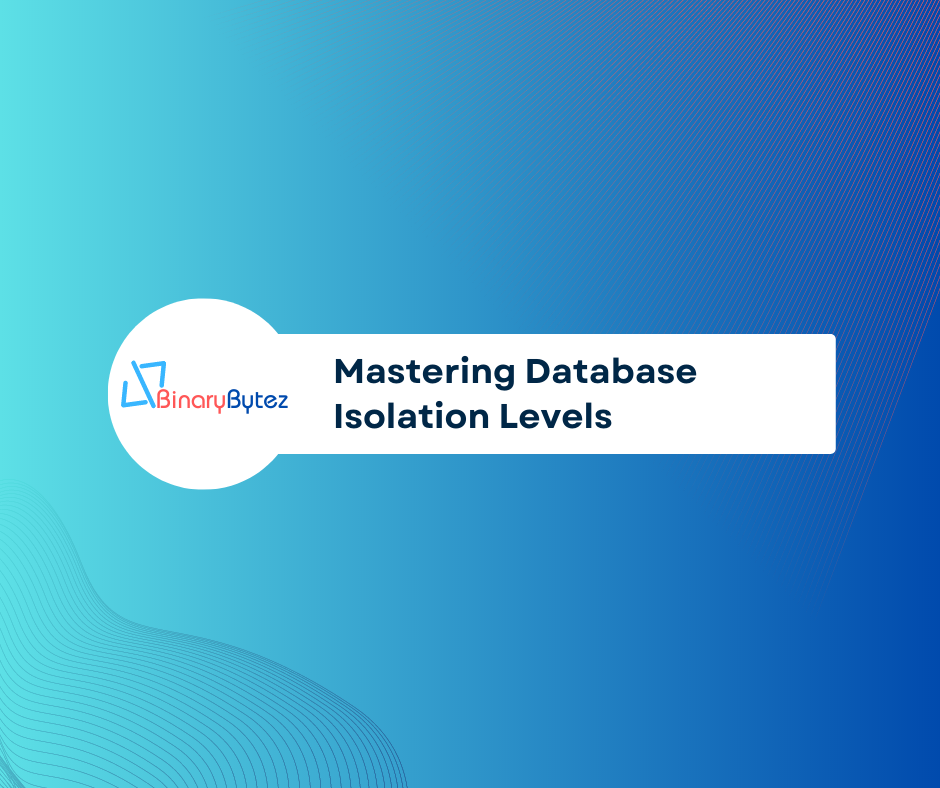Introduction to Database Isolation Levels:
Database isolation levels play a critical role in ensuring data consistency and managing concurrency in SQL Server. These levels define how transactions interact with each other, which directly affects the accuracy and reliability of your data. In this comprehensive guide, I will delve deeply into SQL Server’s isolation levels, offering detailed explanations, real-world scenarios, and considerations to help you make well-informed decisions.

Understanding Isolation Levels in SQL Server:
SQL Server provides four primary isolation levels, each addressing specific requirements and challenges:
1. Read Uncommitted:
- Transactions can read uncommitted changes from other transactions.
- Prone to issues like dirty reads, which occur when one transaction reads data modified by another uncommitted transaction.
2. Read Committed:
- Allows transactions to see only committed changes made by others.
- Solves dirty reads but can lead to non-repeatable reads and phantom reads.
3. Repeatable Read:
- Ensures that data read within a transaction remains unchanged.
- Handles both dirty and non-repeatable reads but doesn’t prevent phantom reads.
4. Serializable:
- Guarantees maximum data integrity by applying read and write locks.
- Eliminates dirty reads, non-repeatable reads, and phantom reads but can impact concurrency.
5. Snapshot Isolation:
A newer addition, this level maintains a versioned copy of the data for each transaction, preventing reads from blocking writes and ensuring consistent snapshots.
Implementation and Code Examples:
The process of setting isolation levels varies depending on the database system in use. For instance, SQL Server employs T-SQL commands like SET TRANSACTION ISOLATION LEVEL to specify the desired level.
SET TRANSACTION ISOLATION LEVEL READ UNCOMMITTED;
BEGIN TRANSACTION;
-- Perform your queries and operations
COMMIT;Understanding Common Problems and Scenarios:
1. Dirty Read:
- Problem: Transaction A reads data modified by Transaction B, which is later rolled back.
- Solution: Higher isolation levels like
Read CommittedorSerializablecan prevent dirty reads.
2. Lost Update:
- Problem: Two transactions simultaneously update the same data, causing one update to be overwritten.
- Solution: Use
Repeatable ReadorSerializableisolation levels to prevent lost updates.
3. Non-Repeatable Read:
- Problem: Transaction A reads a row, Transaction B updates the same row, and Transaction A reads the row again, resulting in different values.
- Solution: Higher isolation levels can mitigate non-repeatable reads.
4. Phantom Read:
- Problem: Transaction A reads a set of rows, Transaction B inserts a new row, and Transaction A reads the set again with the new row.
- Solution: Use
Serializableisolation to prevent phantom reads.
Considerations When Choosing Isolation Levels:
1. Application Requirements:
- Choose an isolation level that aligns with your application’s data consistency and concurrency needs.
2. Performance Impact:
- Consider the trade-off between data consistency and performance. Higher isolation levels may impact concurrency and resource usage.
Conclusion:
Selecting the appropriate isolation level is a pivotal aspect of designing a robust database system. By exploring real-world scenarios and grasping the intricacies of problems like dirty reads, lost updates, non-repeatable reads, and phantom reads, you can make well-informed decisions to ensure both data consistency and effective concurrency control. Understanding SQL Server’s isolation levels empowers you to architect reliable and high-performing database solutions.
